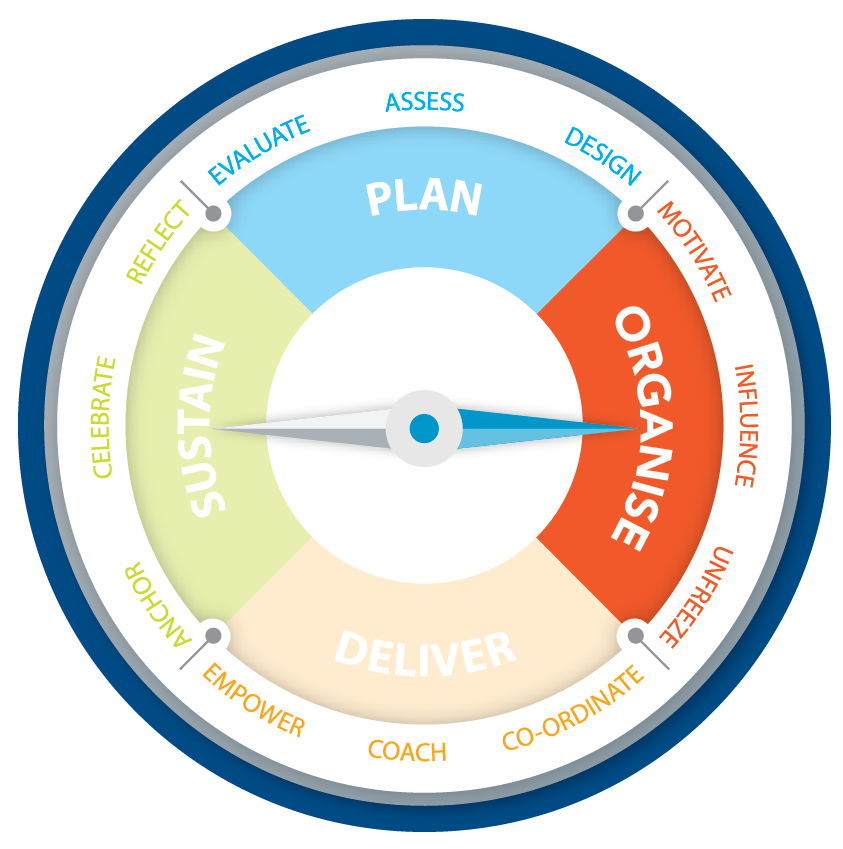
Champions, advocates and early adopters
Whilst all leaders should be seen to be the first advocates of change, there are other critical roles in leading change:
| Change Sponsor | A senior leader who is ultimately responsible for the success of the change within the organisation. |
| Change Agent | A business leader or partner who is responsible for supporting the delivery and implementation of the change. |
| Champion or Advocate | A team member nominated by the leader to actively demonstrate support for the change and influence peers to commit to the change. |
| Early adopters | An experienced team member selected to participate in pilots and become the subject matter expert of the change initiative. Note: This can commonly be the champion or advocate. |
| Change Manager | A project or change management expert responsible for the systematic approach to the organisational change. |
Establish champions
When people feel that they have a role to play in shaping the direction of a change, they are more committed to the realisation of the benefits.
There are many different ways that a change champion can get involved with a change initiative including: designing the change activities, forming part of a pilot, attending focus groups or forums, sharing information about the change, assisting with the design of training and development, and more. A change champion has a responsibility throughout all stages of the change to provide feedback to the project team and leaders regarding the progress of delivery.
When asked to nominate someone from your team to undertake the role of change champion, you should consider:
- Who do team members look up to in the team?
- Who has the most influence within the team?
- Who is confident to advocate the change amongst their peers?
|
|
It is important to identify change champions early and engage them to participate in the change. They play an
influential role in enlisting team members and casting the change in a positive light.
|
|
Engage a coalition of the willing. Put the right people in place in change roles, as they can be a powerful tool
in guiding large-scale change. They quickly influence people to commit and accept the change.
|
Influence through aligning information styles
Your team members have different preferences for the way they receive and retain information. Consider ways you can incorporate different learning and communication styles:
|
VISUAL (40%)
Styles that prefer images
|
AUDITORY (20%)
Styles that prefer heard or spoken information
|
READ/WRITE (10%)
Styles that prefer abstract symbols
|
KINAESTHETIC (30%)
Styles that prefer experience and practice
|
|
|
Did you know that words only make up 8% of the message that an individual receives? Ensure that you pay attention
to your non-verbal communication!.
|
|
Set up notice boards for change related communication messages and material. Have change initiatives as a standing
agenda item at your team meetings.
|
Resources:
● Rapport - Words used by Each Information Style (102kB download)
● Persuasion and Influence Handout (112kB download)
| ©1999 - 2020 Sandar Management Services Pty Ltd |
